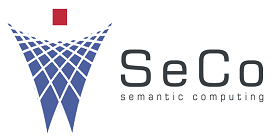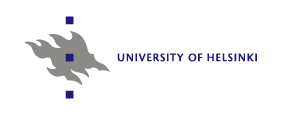LetterSampo: CKCC
Linked Data Finland
★★★★★
LetterSampo: CKCC Knowledge Graph includes separated in different subgraphs representing actors, letters, places, and other aspects and documentation of epistolary data. The data covers approx. 20 000 letters by 2 000 senders and receivers.
To test and demonstrate its usefulness, this Knowledge Graph is in use in the semantic portal LetterSampo: CKCC, explained in more detail in the project page.
This dataset has been used for creating the LetterSampo: CKCC semantic portal demonstrator by using the Sampo model and Sampo-UI framework.
This video shows how the applications works for Digital Humanities research.
To refer to this dataset you can use the publication: Eero Hyvönen, Petri Leskinen and Jouni Tuominen: LetterSampo – Historical Letters on the Semantic Web: A Framework and Its Application to Publishing and Using Epistolary Data of the Republic of Letters. 2021. Under review.
License
https://creativecommons.org/licenses/by-nc/4.0/deed.en
Licensor: Circulation of Knowledge and Learned Practices in the 17th-century Dutch Republic, Semanttisen laskennan tutkimusryhmä (SeCo)
Detailed Dataset Contents
Actors in LetterSampo: CKCC (URI: http://ldf.fi/ckcc/actors)
( Browse data / Download )The people and groups in the LetterSampo: CKCC database. The data has roughly 2 000 actor resources.
Information included: name, alternative names, birth, death, occupations, gender, links to known letters and other related actors.
Source information:
- CKCC.
Example resource URI: http://ldf.fi/ckcc/actors/p903607
Letters in LetterSampo: CKCC (URI: http://ldf.fi/ckcc/letters)
Licensor: Semanttisen laskennan tutkimusryhmä (SeCo)
( Browse data / View in LetterSampo: CKCC Online Portal / Download )The letters in the CKCC database. The data has roughly 20 000 letter resources.
Information included: the senders and receivers, the dates and places of sending and receiving.
Source information:
- CKCC.
Example resource URI: http://ldf.fi/ckcc/letters/l912287
Places (URI: http://ldf.fi/ckcc/places)
( Browse data / View in LetterSampo: CKCC Online Portal / Download )This graph contains names containing the most of places referenced in the actor and letter data. The data has roughly 8 000 place names.
Information included: label, alternative labels, coordinates (WGS84), broader place in hierarchy.
Example resource URI: http://ldf.fi/ckcc/places/p100092
Times (URI: http://ldf.fi/ckcc/times)
Licensor: Semanttisen laskennan tutkimusryhmä (SeCo)
( Browse data / Download )Timespans used in events. The timespans are instances of the class crm:E52_Time-Span and they follow the four-point time schema, e.g., each timespan contains the beginning and ending times of the start and end.
Example resource URI: http://ldf.fi/ckcc/times/time_1538-01-01T00:00:00-1538-12-31T23:59:59-1538-01-01T00:00:00-1538-12-31T23:59:59
Data sources (URI: http://ldf.fi/ckcc/sources)
Licensor: Semanttisen laskennan tutkimusryhmä (SeCo)
( Browse data / Download )Data sources.
Example resource URI: http://ldf.fi/ckcc/sources/source_Descartes%2C+Ren%C3%A9
Data sources (URI: http://ldf.fi/ckcc/ties)
Licensor: Semanttisen laskennan tutkimusryhmä (SeCo)
( Browse data / Download )Data sources.
Example resource URI: http://ldf.fi/lssc/ties/p11527-p300075
Schemas Used
Following schemas (vocabularies) are used in the datasets above:
- Schema: ckcc: documentation, download
- Schema: http://purl.org/dc/elements/1.1/
- Schema: http://schema.org/
- Schema: http://www.cidoc-crm.org/cidoc-crm/
- Schema: http://www.w3.org/1999/02/22-rdf-syntax-ns#
- Schema: http://www.w3.org/2004/02/skos/core#
- Schema: http://xmlns.com/foaf/0.1/
- Schema: lssc: documentation, download
- Schema: letters: documentation, download
- Schema: ties: documentation, download
URI Data Services
Give the URI without brackets (<>) and without encoding.
Human Use Case 1: Viewing the RDF Description of a URI
Human Use Case 2: Linked Data Browsing Starting from a URI
Machine Use Case: Getting the RDF Description of a Resource
If the URI is dereferenceable, e.g., minted at the http://ldf.fi domain, just input the URI in a browser or use it in your favourite software. For example: URI=http://ldf.fi/finlex/laki/p35. If the URI is described in this LDF service you can use the URI template http://ldf.fi/SERVICE/data?uri=URI no matter whether the URI is dereferenceable or not: just input the URI in the form below:
SPARQL Endpoint: http://ldf.fi/ckcc/sparql
Queries are represented using the URI template: http://ldf.fi/SERVICE/sparql?query=QUERY
Query Test Form
SPARQL Service Description
Get the description in RDF. (Notice: A service description is not available for all datasets - then empty description is returned. If you open the link in browser you are directed to a SPARQL query form instead of the RDF description. You can access the service description by making an HTTP query without an Accept header (e.g. curl).) LDF uses W3C SPARQL Service Description recommendation for this.Visualization
A general Google Charts visualization is available here.




